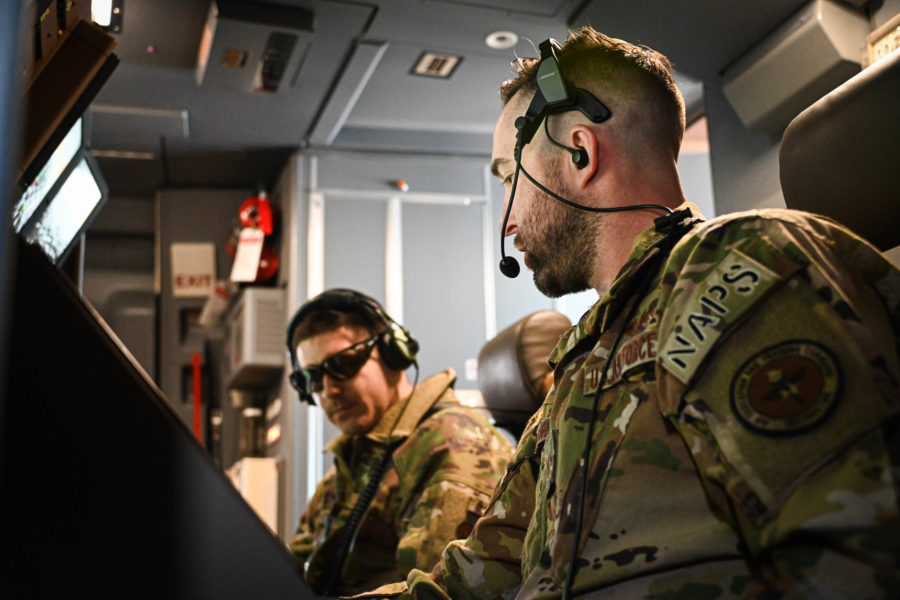The troubled KC-46 Pegasus tanker faced yet another setback Oct. 7. The Air Force said the new Remote Vision System (RVS) 2.0, which will be used to operate the airplane’s refueling boom, will not be available until October 2025. That is a further 19-month delay from the previous plan the Air Force and Boeing, which makes the airframe and the RVS, agreed upon.
The Air Force and Boeing put the delay down to broad supply chain issues in the economy, though the RVS problem existed long before supply chain troubles came to the fore in the COVID-19 pandemic.
“Our defense industrial base continues to face supply chain issues and we’re seeing effects in the acquisition schedules of technically complex systems,” said Andrew P. Hunter, assistant secretary of the Air Force for acquisition, technology, and logistics, in a statement disclosing the delay.
The boom operating system has been troublesome since the Air Force first received the aircraft in 2019.
The KC-46 was only recently cleared for worldwide deployment, including combat missions, Gen. Mike Minihan, the head of Air Mobility Command, announced at AFA’s Air, Space & Cyber Conference in September.
But the problems with the refueling system have not been solved. Instead, Airmen on the KC-46 fleet work around them.
“I think the concern would be that we’re saying that those limitations are OK,” Minihan said. “And they’re not.”
The trouble arises from a complex and unconventional setup. The KC-46’s boom operator is stationed in the front of the aircraft and operates the rigid, telescoping refueling pipe via an array of video screens fed by cameras around the aircraft. That replaces the trusted method of the boom operator simply looking out of the back of the jet through a window.
But the KC-46’s display setup, the RVS, washes out or blacks out in certain conditions, such as in direct sunlight, and sometimes causes problems with the operator’s depth perception. That creates the risk of the boom operator accidentally hitting the aircraft the KC-46 is refueling. That hazard is especially troubling for the Air Force’s stealth fighters and bombers because any scrape could damage the coating used to hide the aircraft from radar.
In 2020, Boeing and the Air Force agreed to fix the problem.
“This agreement addresses deficiencies that hindered safe and effective refueling operations,” the Air Force said at the time.
The solution is known as RVS 2.0 and includes upgrades to the display resolution. But RVS 2.0 essentially just fixes the serious problems the new system created. It will be incorporated on new aircraft and retrofitted to existing models and was supposed to be operational by 2024. Now, the Air Force says it will not be ready until late 2025, though Hunter opened up the possibility that the timeline could move forward.
“We’ll continue to examine possible opportunities to accelerate the schedule to bring this increased operational capability to the tanker fleet,” Hunter said.
In addition to hardware issues, the KC-46 also has to be certified by the Federal Aviation Administration (FAA), which has increased its scrutiny of aircraft following criticism over its lax review of Boeing’s commercial products.
“The revised schedule factors in hardware availability due to global supply chain shortages and estimated timelines to complete the regulatory review,” a Boeing spokesperson told Air & Space Forces Magazine.
For now, the Air Force will make do with its fleet of around 60 KC-46s and aging tankers such as the KC-135 Stratotanker that have been forced to fly more sorties while the KC-46 was on the sidelines. Overall, the KC-46 program is still behind schedule.
“My job is to win tomorrow,” Minihan said. “Nobody’s going to care about my plans for the KC-46 or my fleet in 10 years if I lose tomorrow. I need it now.”
